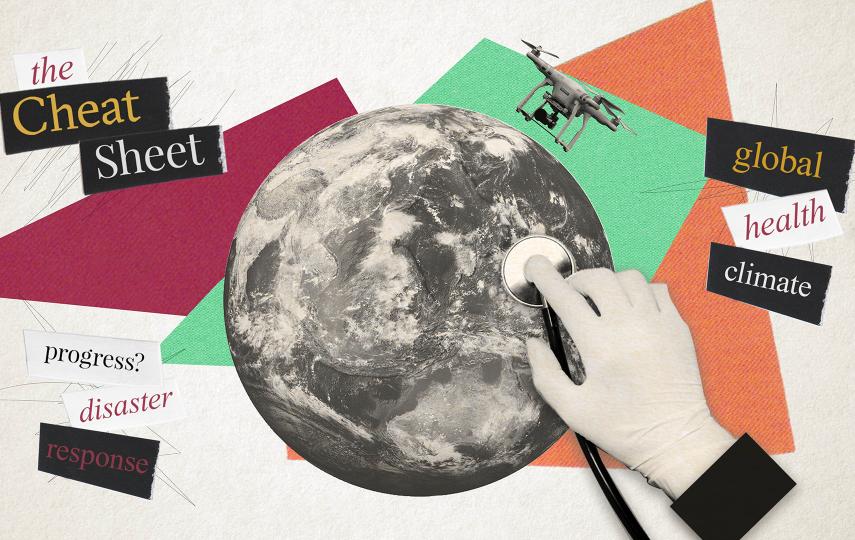Children blow whistles at offenders and post name-and-shame flags in fresh, stinking piles; NGOs help communities turn their waste into “humanure” for crops; and one women’s group “calculated” how much waste tainted the food supply.
“We told the community, `If we don’t make proper toilets, it’s like we’re all eating our faeces,’” said Saraswati Maharjan, a member of the sanitation and hygiene education team in Siddhipur village on the outskirts of Kathmandu.
“In one year, we’re eating 2kg of faeces, and this is if you live far from the public toilet. If you’re near the public toilet, it’s even more,” Maharjan said, referring to the rough estimate her women’s group came up with to scare neighbours into building toilets.
Open defecation is a major problem in Nepal. According to the UN Children’s Fund (UNICEF), only about 46 percent of Nepalese have latrines in their homes - and in the least developed districts in the west, that figure drops to 25 percent.
“Open defecation causes water contamination and gastrointestinal diseases,” said Ravi Kafle, a surveillance medical officer with the World Health Organization (WHO) in the mid-western city of Nepalgunj. “The main problem in the hill region is if someone defecates near the river and it rains, then it mixes with the water and people downhill drink contaminated water.”
Madhav Pahari, a specialist in water, sanitation and hygiene for UNICEF in Nepal, said 37,000 under five deaths were reported in 2008 - 14 percent of which were because of diarrhoea, one symptom of water-borne diseases.
A diarrhoea outbreak during the 2009 rainy season caused almost 59,000 people in the mid and far western regions of Nepal to fall ill and claimed more than 300 lives, according to WHO.
Defecation patrols
Despite the “faeces in our food” tactic, until recently, Maharjan’s neighbours still preferred the outdoors over the four filthy public toilets in Siddhipur - a village of 7,000 people and 1,300 households, 15-20 percent of which did not have toilets.
|
Photo: Alisa Tang/IRIN  |
| Latrines like this are in short supply in rural Nepal |
With support from Environment and Public Health Organization (ENPHO), a local NGO, UN Habitat, and Water Aid Nepal, a sanitation committee and children’s group in Siddhipur decided that the children would run morning patrols. If they saw anyone commiting the “crime”, they wrote the offender’s name on a bright yellow paper flag and posted it in the evidence for all to see. That worked, and Siddhipur was declared an “Open Defecation Free” zone in 2007.
Similarly, in western Kapilbastu District, children blew whistles at the open defecators, said Pahari, of UNICEF.
According to World Vision, mothers groups were fining offenders in western Lamjung District.
Meanwhile, government offices are also turning up the pressure by asking people who come for public services if they have toilets, said Gopal Prasad Upadhyaya, an engineer for the midwestern regional Department of Water Supply and Sanitation.
“When people come for documents - such as birth certificates, citizenship or passport papers - the village development committee staff ask, `Do you have a toilet? When will you construct one?’” Upadhyaya said. “We are not strictly stopping services because they have their rights, but we just ask them again and again.”
Teachers are also asking students in class to raise their hands if they have toilets. Those without, return home to pressure their parents.
Model village?
Every home in Siddhipur now has a toilet, more than 100 of which are “ecosan” toilets that separate urine and faeces for use as fertilizer.
Still, people continue to defecate in the open.
“It is a big problem. There are some organizations building toilets in houses, but then it [the toilet] is used to store wood to keep it safe from the rain,” said Kafle, of WHO. “They say they feel more comfortable outside.”
at/nb/pt/cb
This article was produced by IRIN News while it was part of the United Nations Office for the Coordination of Humanitarian Affairs. Please send queries on copyright or liability to the UN. For more information: https://shop.un.org/rights-permissions





